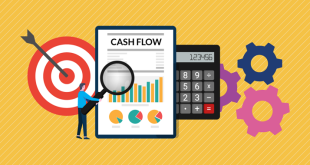Managing monthly expenses can be a challenge, but by implementing effective strategies, you can significantly reduce your spending and save more money. Whether you’re looking to pay off debt, save for a big purchase, or simply improve your financial health, cutting down on unnecessary expenses is crucial. This guide provides ten practical ways to reduce your monthly expenses.
1. Create a Budget:
A budget is the foundation of financial management and helps you track your income and expenses.
How to Get Started:
- List Income and Expenses: Document all sources of income and categorize your expenses (housing, utilities, groceries, transportation, entertainment, etc.).
- Identify Areas to Cut Back: Review your expenses and identify areas where you can reduce spending. Focus on non-essential categories first.
- Set Spending Limits: Allocate specific amounts to each category and stick to these limits throughout the month.
2. Reduce Utility Bills:
Lowering your utility bills can save you a significant amount of money each month.
How to Get Started:
- Use Energy-Efficient Appliances: Invest in energy-efficient appliances and light bulbs to reduce electricity consumption.
- Adjust Thermostat Settings: Lower your thermostat in winter and raise it in summer to save on heating and cooling costs.
- Unplug Electronics: Unplug devices when not in use to prevent phantom energy consumption.
3. Cut Back on Subscriptions:
Monthly subscriptions for streaming services, magazines, and other memberships can add up quickly.
How to Get Started:
- Review Subscriptions: List all your subscriptions and determine which ones you use regularly.
- Cancel Unnecessary Subscriptions: Cancel any subscriptions that you don’t use or can live without.
- Share Accounts: Share streaming service accounts with family or friends to split the cost.
4. Shop Smarter for Groceries:
Grocery bills are a major expense for many households, but there are ways to save.
How to Get Started:
- Plan Meals: Plan your meals for the week and create a shopping list to avoid impulse purchases.
- Buy in Bulk: Purchase non-perishable items in bulk to save money in the long run.
- Use Coupons and Discounts: Take advantage of coupons, sales, and loyalty programs to reduce your grocery bill.
5. Limit Dining Out:
Eating out can be convenient but is often more expensive than cooking at home.
How to Get Started:
- Cook at Home: Prepare meals at home as much as possible. Experiment with new recipes to keep things interesting.
- Pack Lunches: Bring homemade lunches to work or school instead of buying food.
- Limit Dining Out: Set a limit on how often you dine out each month and stick to it.
6. Reduce Transportation Costs:
Transportation expenses, including gas, maintenance, and public transit, can be reduced with a few simple changes.
How to Get Started:
- Carpool: Share rides with coworkers or friends to save on gas and reduce wear and tear on your vehicle.
- Use Public Transportation: Take advantage of public transportation options, which are often cheaper than driving.
- Maintain Your Vehicle: Regular maintenance keeps your car running efficiently and can prevent costly repairs.
7. Save on Insurance:
Reviewing and adjusting your insurance policies can lead to significant savings.
How to Get Started:
- Compare Quotes: Shop around for the best rates on auto, home, and health insurance. Compare quotes from different providers.
- Increase Deductibles: Consider raising your deductibles to lower your monthly premiums.
- Bundle Policies: Bundle multiple insurance policies with the same provider for discounts.
8. Cut Cable and Use Streaming Services:
Cable TV can be a major expense, but there are cheaper alternatives available.
How to Get Started:
- Cancel Cable: Cut the cord and switch to streaming services, which often offer more affordable options.
- Choose Affordable Plans: Select the streaming services that best meet your needs and avoid subscribing to too many at once.
- Use Antennas: Invest in an antenna to access free over-the-air channels for local news and entertainment.
9. DIY Home Repairs and Maintenance:
Taking on small home repairs and maintenance tasks yourself can save you money on professional services.
How to Get Started:
- Learn Basic Repairs: Learn how to do basic home repairs, such as fixing leaky faucets, painting, and replacing light fixtures.
- Use Online Tutorials: Utilize online tutorials and videos to guide you through DIY projects.
- Regular Maintenance: Perform regular maintenance tasks, such as cleaning gutters and changing air filters, to prevent costly repairs.
10. Limit Impulse Purchases:
Impulse buying can quickly derail your budget, but there are ways to curb this habit.
How to Get Started:
- Wait Before Buying: Implement a waiting period before making non-essential purchases. This helps you determine if you really need the item.
- Create a Shopping List: Stick to a shopping list when you go to the store to avoid buying unnecessary items.
- Avoid Temptations: Stay away from stores or online shopping sites where you’re likely to make impulse purchases.
Conclusion:
Reducing your monthly expenses is essential for improving your financial health and achieving your financial goals. Create a budget, reduce utility bills, cut back on subscriptions, shop smarter for groceries, limit dining out, and reduce transportation costs. Save on insurance, cut cable, DIY home repairs, and limit impulse purchases. By implementing these strategies, you can lower your monthly expenses and save more money.


